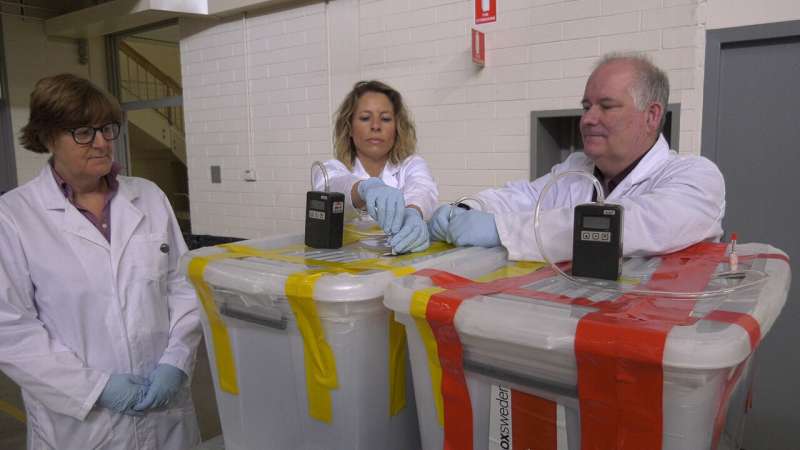Australians unknowingly inhaling methamphetamine in former home labs

Families unknowingly living in properties previously used as methamphetamine or "ice" labs could be suffering from significant risks of inhalation and skin exposure as meth moves from gyprock walls and other furnishings into air, raising contamination levels throughout their property.
In a new study, Flinders University researchers Dr. Jackie Wright, Associate Professor Stewart Walker and Associate Professor Kirstin Ross analyzed air samples from homes known to be contaminated with meth, and found significant levels in air inside these homes as well as in the air above possessions, including soft toys removed from a contaminated home.
The study, published in the Springer Nature Journal of Exposure Science and Environmental Epidemiology, found that inhalation could be a route of exposure to methamphetamine in contaminated homes.
Dr. Jackie Wright says the study highlights current practices underestimate the risk of exposure for people living in contaminated homes, as surface wipes mainly deployed during testing don't measure inhalation exposure, and regulations must be addressed to ensure real inhalation risks are adequately dealt with.
"Our study indicates inhalation exposure has the potential to result in significant intakes of methamphetamine, adding to more well-known risks such as dermal absorption and ingestion," says Dr. Wright.
"Australian guidelines currently allow for the assessment of methamphetamine in contaminated properties, or properties contaminated with other illicit drugs, but ignore inhalation exposure. These policies can significantly underestimate the risks in former meth houses when new owners aren't aware, and therefore indicate the guidelines don't currently address protective health measures."
Associate Professor Kirstin Ross says further research into the use of air analysis using sorbent tubes should be undertaken to better assess the level of contamination in homes, to ultimately minimize future risks for concerned families.
"Our study findings support sampling of methamphetamine in the air using commercially available sorption tubes and analytical methods. This would provide additional insight into the levels of contamination in a home. This data supports our assessment that the air phase is an important aspect of the transfer of methamphetamine contamination and the inhalation pathway is just as relevant as surface sampling when evaluating exposure risks."
Associate Professor Stewart Walker says the risk of methamphetamine exposure varies depending on the age of people inside a contaminated home, with families with children susceptible to the highest risk because of the various age groups living together.
"For young children, methamphetamine intake risks are dominated by the dermal absorption pathways as young children come into regular contact with surfaces and objects in a home. Ingestion is also important as young children often put things in their mouths. So inhalation exposures account up to 20% of the total intake. While for adults, intakes of methamphetamine from dermal absorption are lower as they don't come into regular extensive contact with surfaces and objects in the home. In this situation intakes via inhalation comprise around 60% of the total intake, which makes this unmeasured source the most significant risk for adults."
More information: Jackie Wright et al. Current practices underestimate environmental exposures to methamphetamine: inhalation exposures are important, Journal of Exposure Science & Environmental Epidemiology (2020). DOI: 10.1038/s41370-020-00260-x



















